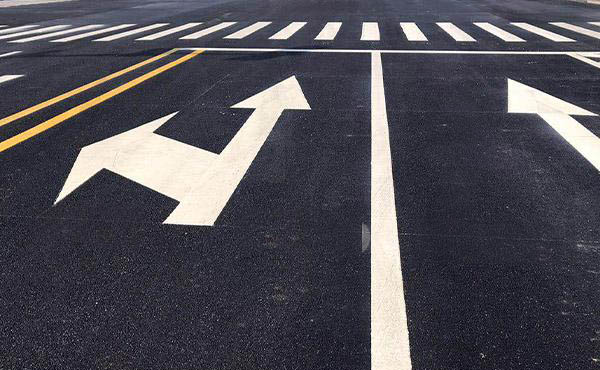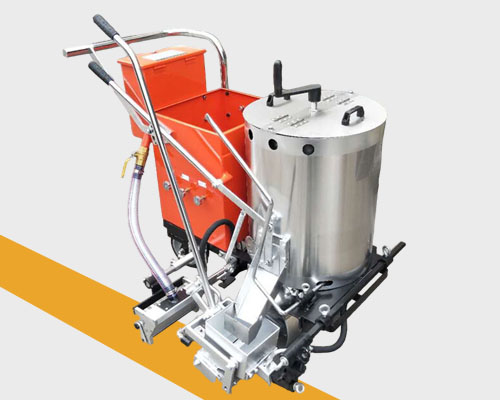Thermoplastic paint is widely used in road marking due to its durability, fast drying properties, and strong adhesion to road surfaces. Thermoplastic road marking paint is composed of thermoplastic resin, pigments, fillers, reflective materials, and additives, and has excellent wear resistance, long service life, high nighttime visibility, fast drying time, and weather resistance. However, in some cases, the drying process can be significantly slowed down, affecting marking efficiency. The following are the main causes of drying delays and countermeasures.

1. Ambient Temperature Conditions
According to industry standards, the optimal drying time for hot melt paint at 23°C (73°F) is within 3 minutes. However, if the ambient temperature rises, the cooling process slows down, resulting in longer drying times.
- Hot weather impact: In summer, asphalt pavement absorbs and stores heat, often exceeding 60°C (140°F). When thermoplastic paint is applied, it takes longer to cool to the pavement temperature, causing a delay in curing.
- Time of day matters: This problem is most noticeable between 11 a.m. and 4 p.m., especially on double yellow solid lines, as they are exposed to sunlight for a long time and retain heat longer.
2. High Pavement Surface Temperature
Road surfaces, especially asphalt, absorb and radiate heat, creating a “heat sink” effect that slows down the cooling of the coating.
- Black asphalt retention: Dark asphalt absorbs more solar radiation and remains at a higher temperature even after sunset.
- Thermal conductivity differences: Concrete road surfaces dissipate heat faster than asphalt, so thermoplastic coatings may dry faster on concrete surfaces.
3. Paint composition and additives
The density and chemical composition of thermoplastic paint directly affect the drying speed.
- Excessive anti-settling agents: Some manufacturers add fillers or anti-settling agents to reduce costs, but these substances can lower the melting point and prolong drying time.
- Low-quality resins: Poor-quality thermoplastic resins may not cure efficiently, resulting in poor adhesion and prolonged drying times.
- Reflective bead content: While glass beads can improve visibility, excessive amounts can alter the viscosity of the paint and affect drying performance.
How to Improve Drying Speed in Hot Conditions?
To ensure optimal road marking performance, consider the following adjustments:
- Apply road markings during cooler periods: Early morning or evening construction avoids high temperature periods.
- Use high temperature formulations: Some thermoplastic paints are designed specifically for tropical climates and use faster drying resins.
- Preheat the road surface (if feasible): Using a road surface dryer before construction can reduce the temperature difference between the paint and the road surface.
- Optimize the paint mixture: Ensure the proper balance of resins, fillers, and additives to maintain fast drying without compromising durability.
Huayuan: Your trusted road marking solution provider
Henan Huayuan is a leading global supplier of road marking machinery and thermoplastic paint equipment. Our product range includes:
- Manual & self-propelled road marking machines – suitable for precise line marking.
- Heavy-duty road marking trucks – Suitable for large highway projects.
- Thermoplastic melting pots – Ensure even heating of the paint.
- Paint transport trailers and pavement dryers – Improve efficiency at the construction site.
- Road marking removal machines – Used for maintenance and repainting.

By choosing high-quality road marking paint and reliable road marking machines, contractors can achieve faster drying times, longer-lasting markings, and improved overall performance.
For more information on road marking technology and best practices, stay tuned for our latest updates!
